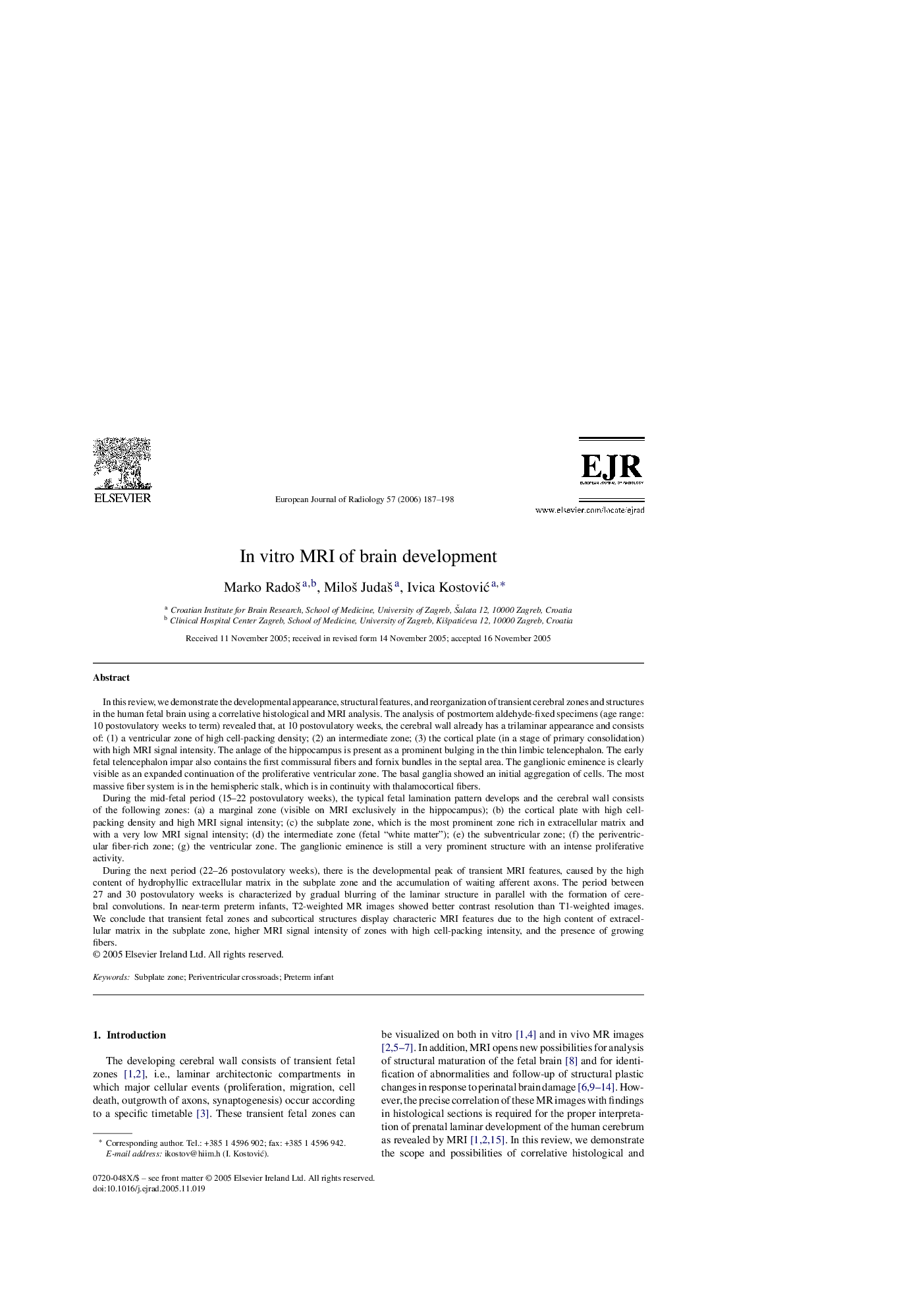| کد مقاله | کد نشریه | سال انتشار | مقاله انگلیسی | نسخه تمام متن |
|---|---|---|---|---|
| 4228763 | 1609868 | 2006 | 12 صفحه PDF | دانلود رایگان |

In this review, we demonstrate the developmental appearance, structural features, and reorganization of transient cerebral zones and structures in the human fetal brain using a correlative histological and MRI analysis. The analysis of postmortem aldehyde-fixed specimens (age range: 10 postovulatory weeks to term) revealed that, at 10 postovulatory weeks, the cerebral wall already has a trilaminar appearance and consists of: (1) a ventricular zone of high cell-packing density; (2) an intermediate zone; (3) the cortical plate (in a stage of primary consolidation) with high MRI signal intensity. The anlage of the hippocampus is present as a prominent bulging in the thin limbic telencephalon. The early fetal telencephalon impar also contains the first commissural fibers and fornix bundles in the septal area. The ganglionic eminence is clearly visible as an expanded continuation of the proliferative ventricular zone. The basal ganglia showed an initial aggregation of cells. The most massive fiber system is in the hemispheric stalk, which is in continuity with thalamocortical fibers.During the mid-fetal period (15–22 postovulatory weeks), the typical fetal lamination pattern develops and the cerebral wall consists of the following zones: (a) a marginal zone (visible on MRI exclusively in the hippocampus); (b) the cortical plate with high cell-packing density and high MRI signal intensity; (c) the subplate zone, which is the most prominent zone rich in extracellular matrix and with a very low MRI signal intensity; (d) the intermediate zone (fetal “white matter”); (e) the subventricular zone; (f) the periventricular fiber-rich zone; (g) the ventricular zone. The ganglionic eminence is still a very prominent structure with an intense proliferative activity.During the next period (22–26 postovulatory weeks), there is the developmental peak of transient MRI features, caused by the high content of hydrophyllic extracellular matrix in the subplate zone and the accumulation of waiting afferent axons. The period between 27 and 30 postovulatory weeks is characterized by gradual blurring of the laminar structure in parallel with the formation of cerebral convolutions. In near-term preterm infants, T2-weighted MR images showed better contrast resolution than T1-weighted images. We conclude that transient fetal zones and subcortical structures display characteric MRI features due to the high content of extracellular matrix in the subplate zone, higher MRI signal intensity of zones with high cell-packing intensity, and the presence of growing fibers.
Journal: European Journal of Radiology - Volume 57, Issue 2, February 2006, Pages 187–198